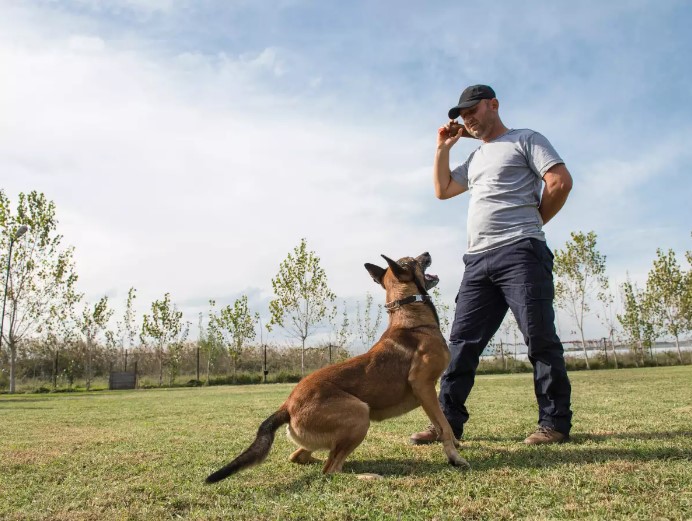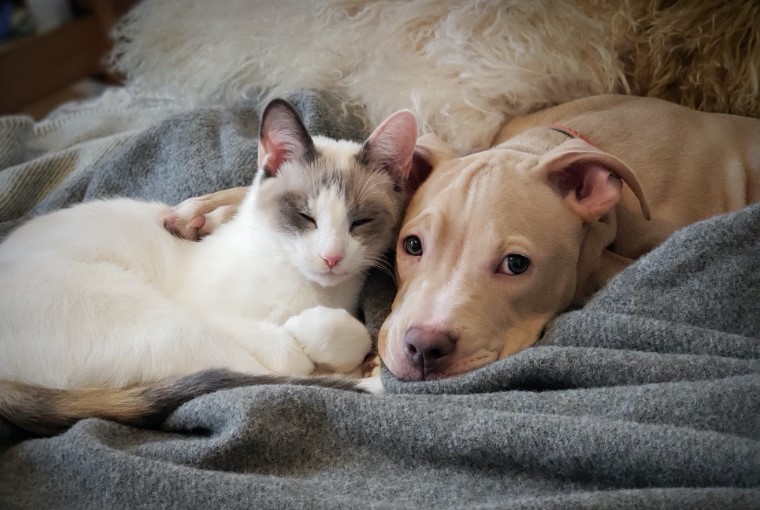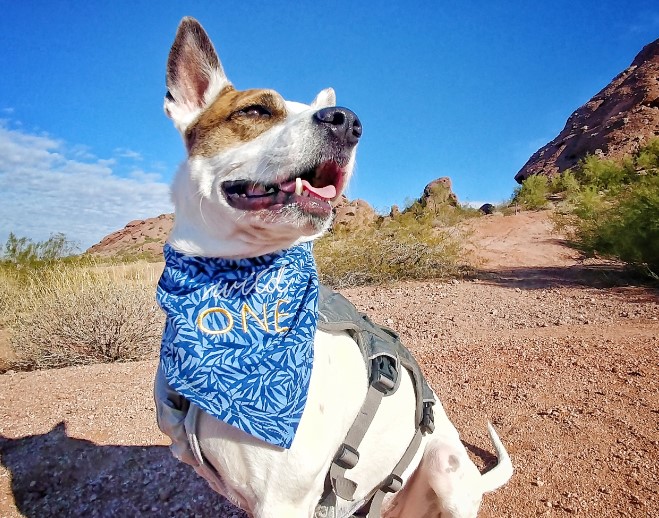
Pets Trainings: A Comprehensive Guide to Training Your Furry Friends
Introduction
Pets are an integral part of our lives, bringing joy, companionship, and unconditional love. However, without proper training, they can exhibit undesirable behaviors that may strain the bond between pets and their owners. That’s where Pets Trainings come into play. In this comprehensive guide, we will explore effective techniques and strategies to train your furry friends, ensuring a harmonious and well-behaved pet. Whether you have a mischievous puppy or a rambunctious kitten, this article will provide you with the knowledge and tools to achieve successful pet training.
The Importance of Pets Trainings
Pets Trainings are essential for a multitude of reasons. Not only do they foster good behavior and obedience, but they also promote mental stimulation and strengthen the bond between pet and owner. Well-trained pets are more likely to have a happy and fulfilling life, free from the stress and anxiety caused by behavioral issues. By investing time and effort into training your pets, you are investing in their overall well-being and ensuring a harmonious living environment.
Understanding Your Pet’s Behavior
Before diving into training techniques, it’s crucial to understand your pet’s behavior. Each animal species and even individual pets have unique personalities and instincts. By familiarizing yourself with their natural behaviors and tendencies, you can tailor your training methods to suit their needs effectively. Whether it’s understanding canine body language or deciphering feline communication cues, a deeper understanding of your pet’s behavior will pave the way for successful training.
Creating a Positive Learning Environment
A positive learning environment is the foundation of successful Pets Trainings. When training your pet, it’s important to create an atmosphere that encourages learning and growth. Here are some key elements to consider:
1. Patience and Consistency
Pets, like humans, require time to learn and adapt to new concepts. Be patient with your pet and provide consistent guidance throughout the training process. Consistency in commands, rewards, and boundaries will help your pet grasp the training objectives more effectively.
2. Positive Reinforcement
Positive reinforcement involves rewarding your pet for exhibiting desired behaviors. This can be in the form of treats, praise, or playtime. By associating positive experiences with good behavior, you encourage your pet to repeat those actions. Positive reinforcement is more effective than punishment-based techniques, as it promotes a trusting and loving relationship between you and your pet.
3. Clear Communication
Effective communication is key to successful training. Use clear and concise commands that your pet can understand. Pair your verbal commands with visual cues to reinforce the desired behavior. Additionally, learn to read your pet’s body language to better understand their needs and emotions.
4. Safe and Distraction-Free Environment
Training sessions should take place in a safe and distraction-free environment. Remove any potential hazards or sources of disturbance that may hinder your pet’s focus. A quiet room or enclosed outdoor space is ideal for training sessions, especially when introducing new commands or techniques.
Basic Commands and Obedience Training
Basic commands and obedience training lay the groundwork for well-behaved pets. These fundamental skills enhance communication and ensure your pet’s safety in various situations. Here are some essential commands to teach your pet:
1. Sit
Teaching your pet to sit is one of the first commands they should learn. It helps instill impulse control and prepares them for further training. Hold a treat close to your pet’s nose, then slowly move it up and back over their head. As their nose follows the treat, their bottom will naturally lower into a sitting position. Reward them with the treat and praise when they successfully sit.
2. Stay
The “stay” command is crucial for keeping your pet in one place when necessary. Start with your pet in the sitting position. Hold your hand up, palm facing them, and say “stay” while taking a step back. If they remain in place, reward them. Gradually increase the distance and duration of the “stay” command over time.
3. Come
The “come” command is essential for recall and ensuring your pet returns to you when called. Begin indoors or in a confined space. Say your pet’s name followed by “come” in an enthusiastic tone. When they approach you, reward them with treats and praise. Practice this command in various environments to reinforce their response.
4. Lie Down
The “lie down” command teaches your pet to settle and relax on command. Start with your pet in a sitting position. Hold a treat close to their nose and move it down towards the ground. As they follow the treat, their body will naturally lower into a lying position. Reward them when they lie down and offer praise.
By practicing these basic commands consistently, you will establish a strong foundation for further training and reinforce good behavior in your pet.
Housebreaking and Crate Training
Housebreaking and crate training are crucial aspects of pet training, particularly for dogs. These techniques help establish proper bathroom habits and provide a safe and comfortable space for your pet. Here’s a breakdown of each training method:
1. Housebreaking
Housebreaking involves teaching your pet where and when to eliminate waste. It requires patience, consistency, and a regular schedule. Follow these steps to housebreak your pet:
a. Establish a Designated Elimination Area
Choose a specific spot in your yard or a designated area indoors where you want your pet to eliminate waste. Take them to this spot consistently to establish a routine.
b. Set a Feeding Schedule
Feed your pet at regular intervals throughout the day to establish a predictable bathroom schedule. This will help you anticipate when they need to go outside.
c. Supervise and Reinforce
Keep a close eye on your pet, especially during the housebreaking process. When you notice signs that they need to eliminate (e.g., circling, sniffing, or restlessness), immediately take them to the designated area. Use a verbal cue, such as “go potty,” to associate the action with the command. Once they eliminate in the correct spot, reward them with praise and treats.
d. Clean Accidents Properly
If accidents happen indoors, clean them thoroughly using an enzymatic cleaner to remove any scent traces that may attract your pet to eliminate in the same spot again.
2. Crate Training
Crate training provides your pet with a safe and secure space of their own. It also helps with housebreaking and prevents destructive behaviors when unsupervised. Follow these steps to crate train your pet:
a. Introduce the Crate Gradually
Make the crate a positive and inviting space for your pet. Place comfortable bedding, toys, and treats inside. Leave the crate door open initially and allow your pet to explore at their own pace.
b. Create Positive Associations
Encourage your pet to enter the crate by using treats or toys. Associate positive experiences with the crate, such as feeding meals or providing chew toys while they are inside.
c. Gradually Increase Crate Time
Once your pet is comfortable entering the crate, start closing the door for short periods. Stay nearby and offer reassurance. Gradually increase the duration as they become more relaxed. Avoid rushing the process to prevent any negative associations with the crate.
d. Use the Crate for Sleep and Alone Time
Encourage your pet to sleep in the crate at night and spend short periods alone inside during the day. This helps them become accustomed to being alone and prevents separation anxiety.
Remember, never use the crate as a form of punishment. It should always be a positive and comfortable space for your pet.
Socializing Your Pet
Socializing your pet is crucial for their overall well-being and helps them develop appropriate behaviors around other animals and people. Early socialization is particularly important for puppies and kittens, but it can be beneficial for pets of all ages. Here’s how to socialize your pet effectively:
1. Expose Them to Various Environments
Introduce your pet to different environments, such as parks, beaches, and busy streets. Gradually expose them to new sights, sounds, and smells. This exposure helps them become more confident and adaptable in various situations.
2. Introduce Them to Other Animals
Arrange controlled and supervised interactions with other animals. Start with calm and friendly animals, gradually progressing to more challenging encounters. This will teach your pet appropriate social behaviors and prevent aggression or fear around other animals.
3. Interact with People of Different Ages and Backgrounds
Expose your pet to people of different ages, appearances, and backgrounds. Encourage gentle interactions and positive experiences with a variety of individuals. This will help your pet become comfortable around different types of people.
4. Provide Positive Reinforcement
Reward your pet for calm and friendly behavior during social interactions. Use treats, praise, and play to reinforce positive experiences. This will encourage them to continue exhibiting appropriate social behaviors.
Socializing your pet is an ongoing process that requires continuous exposure and reinforcement. By investing time and effort into socialization, you will raise a well-adjusted and confident pet.
Behavioral Issues and Problem Solving
Even with the best training efforts, pets may develop behavioral issues from time to time. It’s important to address these issues promptly to maintain a harmonious relationship with your furry friend. Here are some common behavioral issues and tips for problem-solving:
1. Excessive Barking
Excessive barking can be a nuisance. To address this issue, identify the triggers and redirect your pet’s attention. Provide mental stimulation, such as puzzle toys, and reward them for quiet behavior. If necessary, consult a professional trainer or animal behaviorist for further guidance.
2. Separation Anxiety
Separation anxiety is common in pets and can result in destructive behaviors when left alone. Gradual desensitization and counterconditioning techniques can help alleviate separation anxiety. Start by leaving your pet alone for short periods and gradually increase the duration. Provide interactive toys or leave calming music on to create a soothing environment.
3. Aggression
Aggression towards humans or other animals requires immediate attention. Determine the underlying cause of aggression and consult a professional trainer or behaviorist for guidance. They will assess the situation and provide appropriate techniques to manage and modify aggressive behavior.
4. Chewing and Destructive Behavior
Chewing and destructive behavior often occur due to boredom or anxiety. Provide your pet with appropriate chew toys and mental stimulation to redirect their energy. Ensure they have regular exercise and playtime to prevent excess energy buildup.
Remember, addressing behavioral issues may require time and patience. Seek professional help if the problems persist or escalate.
Advanced Training Techniques
Once your pet has mastered basic commands and obedience training, you can move on to advanced training techniques. These techniques challenge their mental and physical capabilities while deepening the bond between you and your pet. Here are some examples of advanced training:
1. Trick Training
Trick training involves teaching your pet fun and impressive tricks. From simple tricks like “roll over” to complex ones like “playing dead,” trick training provides mental stimulation and builds your pet’s repertoire of skills. Break down each trick into smaller steps and reward your pet for successful completion.
2. Clicker Training
Clicker training utilizes a clicker, a small device that emits a distinct sound, to mark desired behaviors. It helps communicate precise moments of correct behavior to your pet. Pair the sound of the clicker with rewards to reinforce positive behavior.
3. Target Training
Target training involves teaching your pet to touch a specific object, such as a target stick or your hand, with their nose or paw. This technique can be used for various purposes, including teaching complex tricks, shaping behavior, or guiding your pet during agility training.
4. Heel Training
Heel training teaches your dog to walk calmly by your side without pulling on the leash. Use treats and positive reinforcement to reward your dog for maintaining the correct position. With consistent practice, your dog will learn to walk politely on a loose leash.
Advanced training techniques not only stimulate your pet’s mind but also provide a fun and engaging experience for both of you. Be patient and break down each task into manageable steps to ensure success.
Sports and Agility Training
Sports and agility training are excellent ways to keep your pet physically fit and mentally stimulated. They provide an outlet for energy and foster a deeper bond between you and your pet. Here are some popular sports and agility training activities for pets:
1. Agility Courses
Agility courses consist of obstacles such as jumps, tunnels, weave poles, and A-frames. Dogs navigate the course under the guidance of their handlers, demonstrating speed, accuracy, and obedience. Agility training improves coordination, builds confidence, and provides an excellent physical workout.
2. Flyball
Flyball is a fast-paced relay race for dogs. Teams of dogs race against each other, jumping over hurdles, retrieving a ball from a box, and returning to their handlers. This sport promotes teamwork, speed, and agility.
3. Disc Dog
Disc dog, also known as Frisbee dog, involves training your dog to catch flying discs. This sport showcases your pet’s jumping, catching, and retrieving abilities. It’s a great way to exercise your dog while having fun outdoors.
4. Canine Freestyle
Canine freestyle combines obedience training, tricks, and dance-like moves to create a choreographed routine set to music. This creative sport showcases the bond between you and your pet while promoting coordination and teamwork.
Engaging in sports and agility training activities not only provides physical exercise for your pet but also strengthens the bond between you and enhances their overall well-being.
FAQs
1. What age should I start training my pet?
It’s best to start training your pet as early as possible. Puppies and kittens have a critical socialization period between 3 and 14 weeks of age, during which they are most receptive to learning and adapting to new experiences. However, dogs and cats of all ages can be trained with patience and consistency.
2. How long should each training session be?
Training sessions should be short and frequent to keep your pet engaged and prevent boredom. Aim for 5-10 minute sessions several times a day, gradually increasing the duration as your pet’s attention span improves.
3. Should I use punishment-based training methods?
Punishment-based training methods can have negative consequences, such as fear, anxiety, and aggression. Positive reinforcement-based training, using rewards and praise, is more effective and promotes a trusting and loving bond between you and your pet.
4. Can older dogs or rescue pets be trained?
Yes, older dogs and rescue pets can be trained. While it may require more patience and consistency, dogs of all ages can learn new behaviors and skills. Tailor the training approach to suit their individual needs and abilities.
5. How can I find a professional trainer or behaviorist?
To find a professional trainer or behaviorist, seek recommendations from your veterinarian, local pet organizations, or reputable training schools. Look for professionals who use positive reinforcement-based methods and have experience working with pets similar to yours.
6. What if my pet’s behavior issues persist despite training?
If your pet’s behavior issues persist or worsen despite training efforts, it’s essential to consult a professional trainer or behaviorist. They can assess the situation, identify underlying causes, and provide customized guidance to address the specific issues.
Conclusion
Pets Trainings are crucial for developing a strong bond with your pet and ensuring their well-being. By creating a positive learning environment, teaching basic commands, addressing behavioral issues, and engaging in advanced training and sports activities, you can nurture a well-behaved and happy pet. Remember to be patient, consistent, and always use positive reinforcement to encourage good behavior. With time, effort, and the right training techniques, you and your pet can enjoy a fulfilling and harmonious relationship.
Partner Site : Travel Tips, Home Decoration, Travel Tours, Home Decor, Dog Responsibility, Home Design, Auto Repair, Engineering Repair, Fashion And Textiles, Home And Garden




